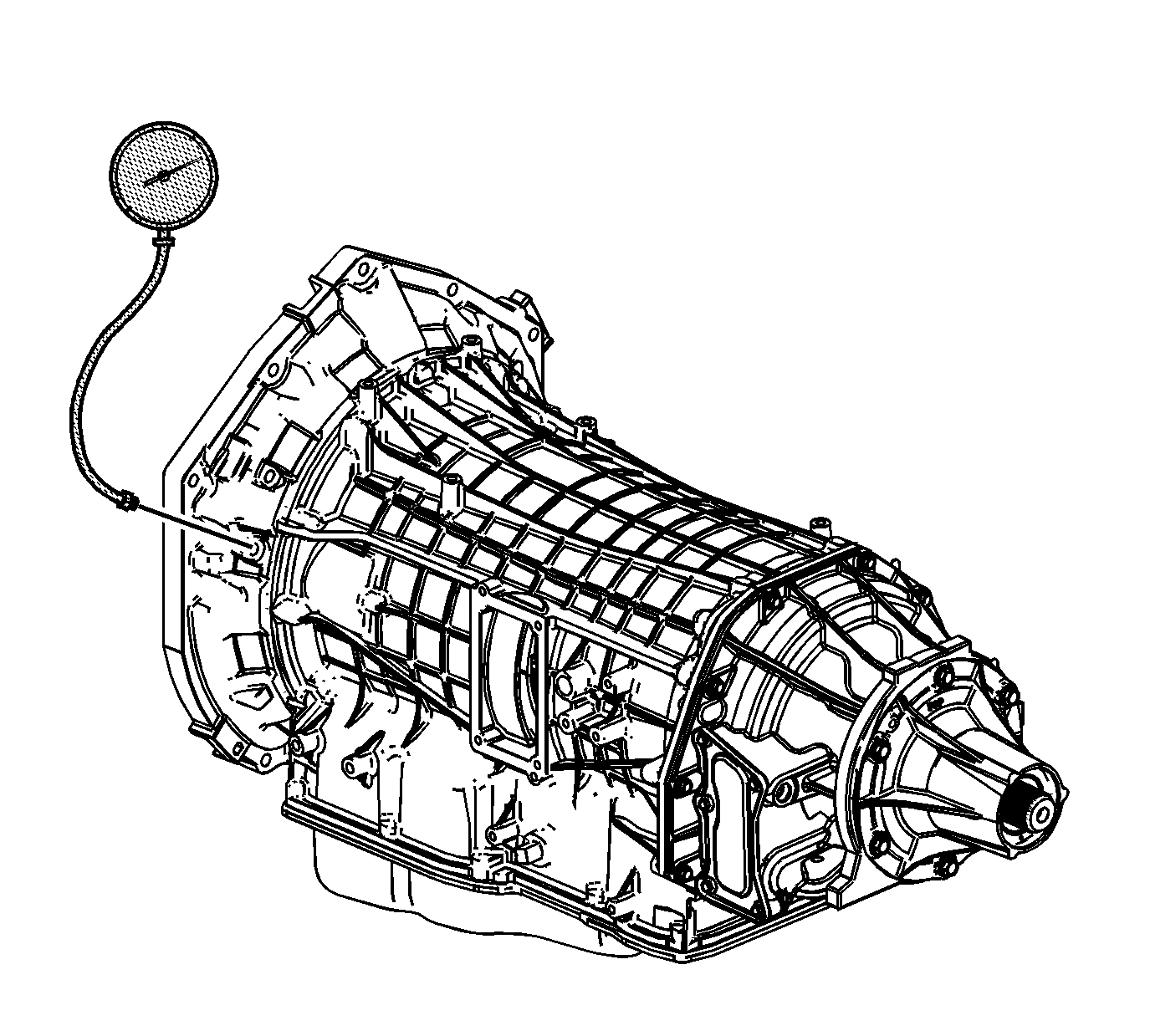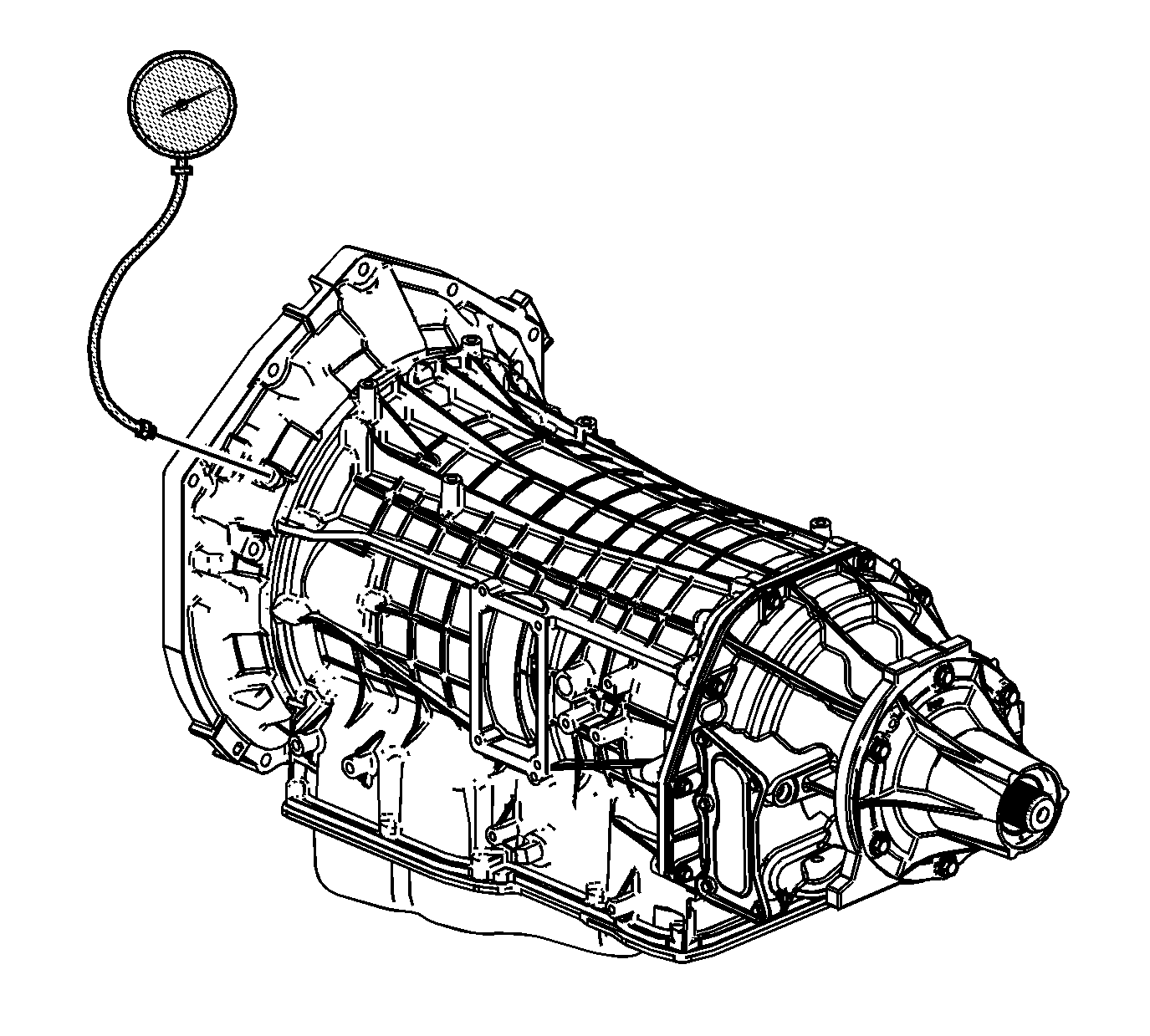Main Fluid Pump

Special Tools
J 21867 Pressure Gage
For equivalent regional tools refer to Special Tools.
- Install a scan tool.
- Start the engine.
- Inspect the transmission for the proper fluid level. Refer to Transmission Fluid Check.
- Use the scan tool to inspect for any active or stored diagnostic trouble codes. If there are any DTC's, refer to that DTC table first.
- Inspect the manual linkage at the transmission for proper function.
- Turn the engine OFF.
- Remove the line pressure test hole plug.
- Install the J 21867 pressure gage .
- Access the Scan Tool Transmission Output Controls for the Line PC Solenoid.
- Start the engine.
- Use the scan tool to increase and decrease the Line PC Solenoid in increments of approximately 100 KPa (15 psi). The scan tool commands the increment values automatically.
- Allow the pressure to stabilize between increments.
- Compare your pressure readings on the scan tool to those indicated on the J 21867 pressure gage .
- If the pressure readings vary greatly, refer to Main Fluid Pump Pressure High or Low.
- Turn the engine OFF.
- Remove the J 21867 pressure gage .
- Install the line pressure test hole plug. Tighten the pressure plug to 11 N·m (97 lb in).
Warning: Keep the brakes applied at all times in order to prevent unexpected vehicle motion. Personal injury may result if the vehicle moves unexpectedly.
Warning: When the transmission is at operating temperatures, take necessary precautions when removing the auxiliary pump pressure test hole plug, to avoid being burned by the catalytic converter.
Note: You may need to remove or disconnect components in order to gain access to the transmission line pressure test hole plug.
Note: In order to achieve accurate line pressure readings, the following procedure must be performed at least 3 times in order to gather uniform pressure readings. Also if you do not have the hood open the engine may go in to AutoStop.
The scan tool is only able to control the line PC solenoid in PARK and NEUTRAL with engine speeds below 1500 RPM. This protects the clutches from extreme high or low line pressures.Caution: Refer to Fastener Caution in the Preface section.
Auxiliary Fluid Pump

Special Tools
J 21867 Pressure Gage
For equivalent regional tools refer to Special Tools.
- Install a scan tool.
- Start the engine.
- Inspect the transmission for the proper fluid level. Refer to Transmission Fluid Check.
- Use the scan tool to inspect for any active or stored diagnostic trouble codes. If there are any DTC's refer to that DTC table.
- Inspect the manual linkage at the transmission for proper function.
- Turn the engine OFF.
- Remove the auxiliary pump pressure test hole plug.
- Install the J 21867 pressure gage .
- Access the Scan Tool Hybrid Output Controls for the Aux Trans Pump Speed.
- Turn key to the Run Position but do not start the engine.
- Use the scan tool to increase and decrease the Aux Pump Speed in increments of approximately 10%. The scan tool commands the increment values automatically starting with 10% going up to 80% and returning down to 30%.
- Allow the pressure to stabilize between increments.
- Your pressure readings on the J 21867 pressure gage should slightly increase with each speed command. The J 21867 pressure gage at 10% should be approximately 40-70 PSI and end up at 80% being approximately 90-120 PSI.
- If the pressure readings vary greatly, refer to Auxiliary Fluid Pump Pressure High or Low.
- Turn the key OFF.
- Remove the J 21867 pressure gage .
- Install the auxiliary pump pressure test hole plug. Tighten the pressure plug to 11 N·m (97 lb in).
Warning: Keep the brakes applied at all times in order to prevent unexpected vehicle motion. Personal injury may result if the vehicle moves unexpectedly.
Warning: When the transmission is at operating temperatures, take necessary precautions when removing the auxiliary pump pressure test hole plug, to avoid being burned by the catalytic converter.
Note: You may need to remove or disconnect components in order to gain access to the transmission auxiliary pump pressure test hole plug.
Note: In order to achieve accurate aux pump pressure readings, the following procedure must be performed at least 3 times in order to gather uniform pressure readings.
Caution: Refer to Fastener Caution in the Preface section.
